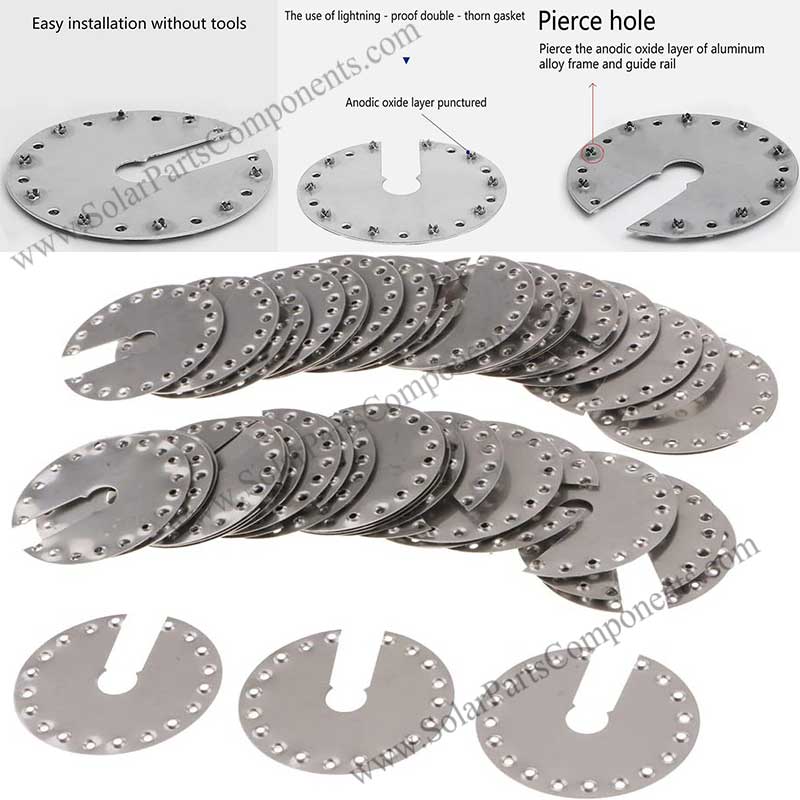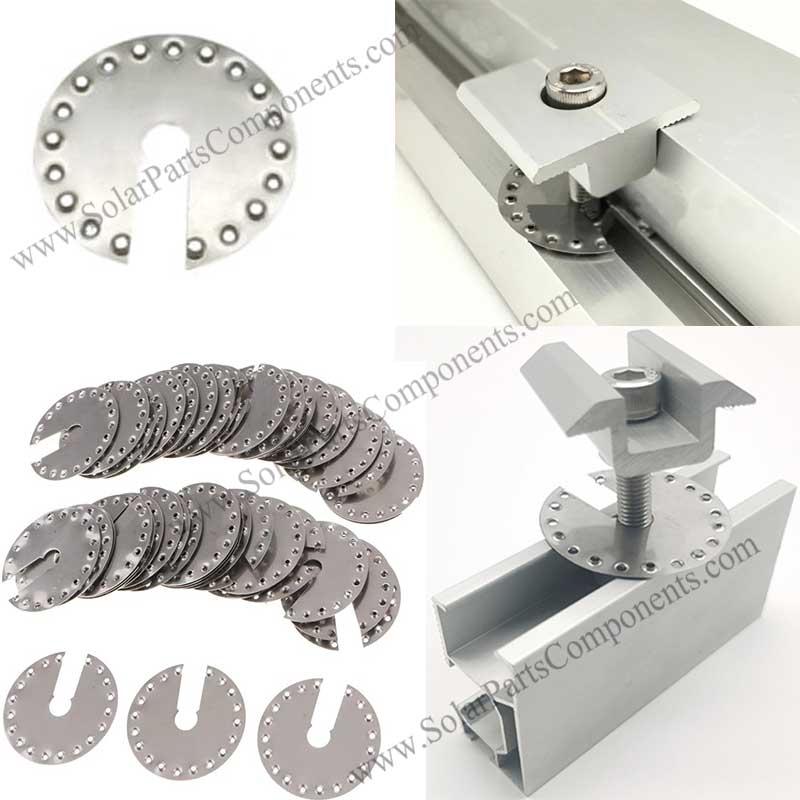A solar panel is a device that converts sunlight into electrical energy, and solar grounding earthing clip are one of its key components.
There are spikes on the surface of the solar grounding clip. This design plays an important role in the overall performance of the solar panel.
— Increase contact area and conductivity
The protruding structure on the surface of the solar grounding earthing clip can significantly increase the contact area between the solar grounding clip and the solar cell.
By increasing the contact area, electrons can be more efficiently conducted from the solar cell to the solar grounding clip, thereby reducing resistive losses.
This helps improve the efficiency of power transmission and ensures that more power is collected and utilized effectively.
— Reduce contact resistance
The protruding structure not only increases the contact area, but also reduces contact resistance.
Contact resistance is an important factor affecting conductive performance. If the contact resistance is too large, the current transmission efficiency will be reduced.
The spurs can make the contact between the solar grounding clip and the battery sheet closer, reducing microscopic gaps, thereby reducing contact resistance and improving current transmission efficiency.
— Improve mechanical fixation
The protrusions on the surface of the solar grounding earthing clipt can also play a role in mechanical fixation.
The spikes can act like tiny “nails” to secure the solar earthing clip more firmly to the solar cells, preventing them from shifting or falling off during installation and use.
This mechanical fixation is critical to maintaining stable operation of the panels over the long term.
— Prevent reflective loss
The efficiency of solar panels is not only related to materials and design, but also to the absorption and reflection of light.
If the surface of the solar grounding clip is smooth and flat, some light may be reflected, reducing the light energy absorbed by the cell.
The spike structure can effectively reduce reflection and increase the scattering of light on the cell, thereby improving the utilization of light energy and increasing power generation efficiency.
All in all, the design of the spikes on the surface of the solar grounding earthing clip is based on various considerations such as improving power transmission efficiency, reducing resistance loss, enhancing mechanical fixation, and reducing reflection loss.
These spikes not only optimize the performance of the panels, but also ensure their reliability and stability in various environments.
Through this refined design, solar panels can convert light energy into electrical energy more efficiently and promote the development of green energy.









